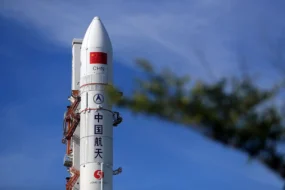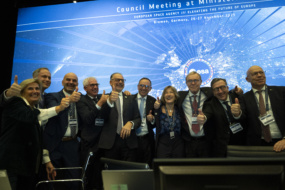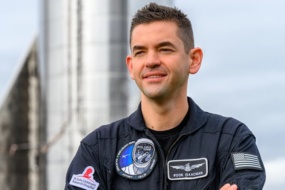As a former space shuttle pilot and commander whose crews helped build the ISS, I am appalled that NASA has reportedly changed its plans for future commercial space stations. As we prepare to celebrate 25 years of Americans continuously living in space in November, these changes will result in NASA giving up its continuous human presence in space after the ISS is deorbited.
Was this tectonic shift in national space policy reviewed by others in the executive branch, or discussed with Congress? It was not, according to space officials I spoke with. It was not even discussed in NASA’s internal governance councils. Acting Administrator Sean Duffy merely issued a directive to change the acquisition strategy for NASA’s commercial follow-on to the ISS.
This directive:
- Delays the final competition for services,
- States that there is no requirement for long duration flights
- Requires only four crew members for 30-day stays.
The implications of this change are deeply detrimental to our hard-won national capability and our plans for Mars.
The long game: Let me explain. I’ll start by saying requirements are absolutely vital to get acquisitions right. In my experience, poor requirements definition—and constant changes as new information comes to light—is the major cause of overruns and schedule delays in acquisition. LEO and the microgravity research and technology development we do there are critical to get humans to Mars, where the flight alone will require six to nine months of microgravity one way.
The medical community has said it needs data from 100 six-to-nine month human missions in microgravity conditions to feel confident that it’s safe to send humans on this journey. Since most past space station missions have been under six months, there will be a significant shortfall of such flights at the end of the station’s life. This is the reason for the long duration requirement for commercial stations; short duration flights will not help NASA to get to Mars.
The bottom line: As if this were not serious enough, the cost implications are also staggering. Cargo and crew transportation are the biggest expenses for the space station. To maintain the continuous presence, NASA pays for two crewed flights each year at the cost of $300M to $400M each, and four to five cargo flights at upwards of $150+M each.
If the US wants a permanent presence in space and the crew is rotating every 30 days, this would require 6x the number of flights per year for crew and likely the same factor increase for cargo. It will hugely increase NASA’s cost to conduct microgravity operations, while simultaneously reducing the value of the human, biological, and physical sciences research being performed.
Where will that money come from? The answer is, it won’t. NASA is obfuscating the fact that sending two or three crews to LEOa year—the level that they can realistically afford—will result in months-long gaps in between missions. This one poorly considered change will dramatically decrease the cost effectiveness of research and human spaceflight in LEO—defeating the whole point of a commercial space station.
Giving up our national capability for sustaining a continuous presence on orbit is not good. It’s not good for the commercial station’s business model, not good for getting to Mars, and not good for our nation’s standing in the world.
Mission shift: While it may be possible to evolve a commercial space station to support longer-duration stays for future missions, not requiring that it be considered in the design up front historically means that NASA will pay more for transportation in the near term, then pay again to upgrade to long-duration flight. I can visualize the headlines in five years when this type of short-term decision-making bears ugly cost and programmatic consequences, and national capability implications. And NASA will be rightly criticized for doing it to themselves.
Another problem is changing the strategy in the 11th hour for industry—never a good idea during acquisition. Industry, and its investors, have anticipated NASA will start the competition for commercial LEO destinations in earnest this year. There is a real question about how much capital can be raised for a private space station, and this change will not make it easier.
Many aerospace industry partners clearly signaled to NASA that their funding sources desired a final competition, guaranteeing return on investment to the funders in the next phase. Extending development instead of going to final competition, as required by Duffy’s new directive, will likely save NASA some money up front, but reduce competition—ultimately driving up costs and hurting innovation—as some industry partners drop out due to lack of funds.
The race in LEO: Meanwhile, China has begun permanently occupying its space station—and inviting international partners to join them. If they offer long-duration flights and research options that are more cost-effective, they will become the partner of choice and accelerate their own capability to send humans on the long journey to Mars.
Ending continuous presence of Americans in space is a significant policy shift with national economic and geopolitical implications that deserves public debate, not being buried in an acquisition directive. With no permanent presence in space, will the US land on the Moon only to lose LEO and Mars?
Pam Melroy served as the deputy NASA administrator in the Biden administration. She is also an astronaut who flew three space shuttle missions to build the ISS, and is a retired Air Force officer.




